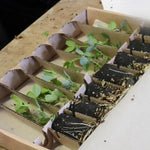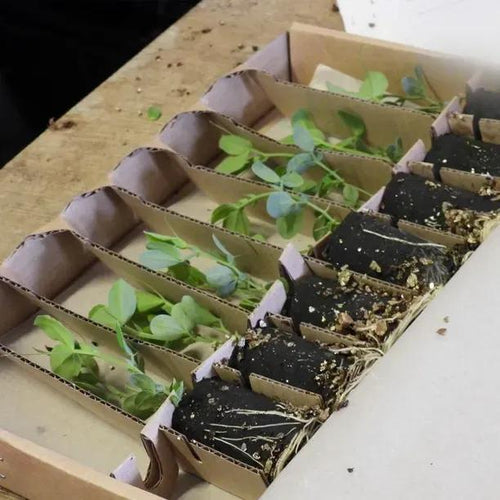Valerie Harrod' Sweet Pea Plants
Valerie Harrod is a gorgeously perfumed annual sweet pea that's hugely popular with exhibitors, who value its long stems, heady scent and large, wavy-petalled flowers in a rich shade of sunset pink, gently turning white towards the centre of each flower. It's a Spencer-type sweet pea, which means it's a beautifully pumped up version of the Grandiflora type, with bigger flowers and ruffled petals.
Browse our sweet pea range.
Our Sweet Peas are delivered in purpose-designed, recycled cardboard packaging, and are ready to be planted out when you get them.
We generally send them out between March and May, but we will email you with the likely delivery timescale once you have placed your order.
Grow her in an open spot, against a warm wall, up a wigwam of canes or over a pergola, where she'll reach 2m, making sure you plant the seedlings where you'll be able to appreciate the fabulous perfume once summer comes. You'll also need to be able to get to the flowers to cut them, as it's a great variety for bringing indoors for vases, where the scent will fill your house.
Features
- Colour: coral pink
- Stem: long
- Height: 2m
- Type: Spencer
- Scent: strong
- Flowering: June to September
- Planting Months: March-June
- Exhibitors' favourite
- Great for cutting
- Royal Horticultural Society Award of Garden Merit
Garden Design Ideas
This coral-pink variety works well with other sweet peas in blush pink (try Mollie Rilstone) or shades of blue and lavender, such as Our Harry. Sweet peas are, of course, a cottage garden favourite, and as such they look wonderful with all the classic summer-flowering cottage garden perennials, such as lavender and roses. You can also grow sweet peas in pots, if space in your borders is limited, but do provide a network of support, such as a trellis or a wigwam of canes, and feed and water them regularly, or they can become weak and mildewy.








 Secure, One-Tap Checkout
Secure, One-Tap Checkout
 Hand Picked, Delivered to Your Door!
Hand Picked, Delivered to Your Door! 1 Year Bareroot Guarantee
1 Year Bareroot Guarantee






